It’s easy to love what dividend stocks have to offer. In addition to the upside potential that equities in general provide, the cash income from dividend-paying companies is a second source of returns—a vital (and relatively tax-friendly) ballast for when market performance isn’t going our way.
But some dividend stocks take the generosity a step further by occasionally increasing the amount they pay out to their shareholders. Others go the extra mile by doing so every year. And a select few really set themselves apart from the crowd by doing so every year for so many years that someone decided to slap a label on them:
Dividend Aristocrats.
Today, I’m going to tell you a little bit about the Dividend Aristocrats, then highlight the 10 best-rated members of a particular blue-chip subset called the S&P 500 Dividend Aristocrats.
Disclaimer: This article does not constitute individualized investment advice. These securities appear for your consideration and not as investment recommendations. Act at your own discretion.
Why You Should Care About Dividend Growth

A dividend program, in and of itself, is a powerful statement by corporate management about their company’s ability to generate profits—specifically, it implies that they expect to produce enough in earnings on a regular basis that they can share some of it with us.
That’s great! If a company went from paying us nothing at all to paying us, say, a dollar per share every year for the rest of our lives, we wouldn’t have much room for complaint.
But a company that started paying us a dollar per share one year, then raised it every year after that, would look a lot more attractive, for several reasons:
- A higher dividend over time means a higher “yield on cost” for us. If we bought a share of stock for $100, that $1 per share would equal a 1% yield on our purchase. If the stock price and dividend both doubled, to $200 per share and $2, respectively, new investors would still be buying at a 1% yield. But us? We’d be earning 2% on our original $100 purchase.
- A higher dividend over time fends off inflation. In most years, we experience inflation, which is when the worth of our currency slightly declines. So $1 worth of groceries, gas, etc. this year will generally buy you slightly less groceries, gas, etc. next year. High inflation over the past few years really drives home this point—according to the U.S. Bureau of Labor Statistics, in January 2025 you would need $1.88 to buy what $1 could have bought in January 2020, right before the COVID pandemic hit a fever pitch. So if you receive $1 in dividends every year in perpetuity, your dividend income will lose its value over time. But if that initial $1 dividend is raised enough every year, your income could keep pace with (or even outrun) inflation.
- A higher dividend can be a sign of quality. Just like initiating a dividend says “we have so much money that you can have some,” a track record of raising dividends typically signals a company’s ability to continue growing its bottom line.
Put simply: Regular dividend growth signals a higher caliber of operations (and thus potentially a higher caliber of stock), and it puts more money in our pockets. That’s a lot to love.
Related: 7 High-Quality, High-Yield Dividend Stocks
The S&P 500 Dividend Aristocrats

The term “Dividend Aristocrats” generally refers to stocks with some sort of track record of dividend growth. There are, in fact, many types of Dividend Aristocrats—European Aristocrats, Canadian Aristocrats, mid-cap Aristocrats, and so on—and each group has a certain set of criteria for inclusion, including a baseline of dividend growth.
But most discussions around Dividend Aristocrats revolve around one particular subset: the S&P 500 Dividend Aristocrats.
The S&P 500 Dividend Aristocrats are the biggest, blue-chip dividend growers that the U.S. equity markets have to offer. And ultimately, they have to meet just two criteria for inclusion:
- Be members of the S&P 500.
- Have increased dividends for at least 25 consecutive years.
That’s pretty easy to remember. However, that second criterion needs a little explaining.
Related: 7 Best Vanguard Dividend Funds [Low-Cost Income]
There’s More Than One Way to Grow Dividends Every Year

Most companies’ annual dividend increases go exactly the way you’d expect: Every year, they raise the amount they regularly pay across the calendar.
Example: Woodley Inc. (KW) distributed $1 per share every quarter in 2024, then to start 2025, it increased that payout to $1.10 per share across the whole year. 2025 would count as one year toward the 25-year streak.
However, technically speaking, dividend increases are calculated across the entire year. So what really mattered wasn’t the increase from $1 to $1.10 per share, but the fact that Woodley Inc. paid out $4 per share across 2024, then $4.40 per share across 2025. Why does that matter? Well …
Example: Woodley Inc. started 2024 paying 90¢ per share per quarter. In mid-2024, it raised its quarterly payout to $1 per share. It paid $3.80 per share (90¢ + 90¢ + $1 + $1) across all of 2024. The next year, Woodley Inc. didn’t increase its quarterly dividend, so it paid out $1 per share quarterly, and thus $4 per share ($1 + $1 + $1 + $1) across the whole year. 2025 would still count as one year toward the 25-year streak. (However, the company would have to increase the quarterly dividend in 2026 to earn another year of growth.)
In short: A Dividend Aristocrat doesn’t necessarily have to raise its periodic dividend every year to achieve a streak of annual dividend growth. (But they frequently do.)
Lastly, whenever a Dividend Aristocrat announces a dividend increase, we in the media typically give them the benefit of the doubt and add another year to their dividend-growth streak. But on rare occasions, the year doesn’t end up qualifying, usually resulting in a broken streak and exclusion from the Aristocrats.
Example: Woodley Inc. paid $1 per share quarterly in 2024, good for $4 per share across the entire year. In January 2025, the company increased the quarterly dividend to $1.10 per share. In mid-year, sudden cash-flow issues forced the company to reduce its dividend by 50%, to 55¢ per share. Woodley Inc. paid out $3.30 per share ($1.10 + $1.10 + 55¢ + 55¢) across 2025. That would not count as a year of dividend growth, thus Woodley Inc.’s dividend-growth streak would end.
Do you want to get serious about saving and planning for retirement? Sign up for Retire With Riley, Young and the Invested’s free retirement planning newsletter.
The Best-Rated Dividend Aristocrats Right Now

Currently, there are 69 S&P 500 Dividend Aristocrats—a group of stocks that most people would generally consider to be stable, dependable companies.
But that doesn’t mean they all make equally worthy investments.
Let’s separate the wheat from the chaff. I’ll show you the 10 best-rated Dividend Aristocrats right now, as determined by their consensus analyst rating, provided by S&P Global Market Intelligence. S&P boils down consensus ratings down to a numerical system where …
- 1 to 1.5: Strong Buy
- 1.5 to 2.5: Buy
- 2.5 to 3.5: Hold
- 3.5 to 4.5: Sell
- 4.5 to 5: Strong Sell
All of the Dividend Aristocrats on this list have a rating of 2 or less, indicating that at worst they enjoy a pretty firm consensus Buy rating, if not an outright Strong Buy rating.
Stocks are listed in reverse order of consensus analyst rating (from worst to best)..
Best Dividend Aristocrat #10: Roper Technologies

- Sector: Technology
- Market cap: $53.6 billion
- Dividend yield: 0.7%
- Consensus analyst rating: 1.83 (Buy)
The most recent round of analyst data has pushed packaging leader Amcor (AMCR) off the list. Replacing it is Roper Technologies (ROP), which designs and develops software and technology-enabled products across the world. It operates under three primary segments:
- Application Software: Includes Deltek enterprise software for project-based businesses, Frontline Education school administration software, IntelliTrans supply chain management software, Strata financial analytics, and more.
- Network Software: Includes DAT Solutions for brokers, carriers, owner-operators, and shippers; iPipeline for life insurance and financial services companies; Subsplash for churches and ministries; and more.
- Technology Enabled Products: Includes CIVCO ultrasound and other diagnostic and therapeutic accessories, Neptune metering and data collection systems, RF Ideas employee badges and card readers, and more.
Roper hasn’t always been this way—over the past decade, the company has been transforming itself by shedding off certain businesses and running up an acquisitive streak of software companies. Consider that in 2018, roughly 40% of revenues were generated by software; today, that number is closer to 75%.
Among its more recent acquisitions is the Convoy Platform—a marketplace where brokers and trusted carriers can match and execute freight. “Convoy Platform is expected to enhance automation capabilities of the core DAT freight matching service, providing a win-win for network participants (brokers, shippers, carriers, etc.),” says Truist Managing Director Terry Tillman. “We believe that this is important as DAT represents one of the largest platform businesses at Roper.”
Tillman is among 12 analysts who rate the stock at Buy. Meanwhile, ROP has just four Hold calls and two Sells.
Roper’s shift to software has many upsides, among them a higher percentage of revenues are now recurring, which typically provides a higher level of reliability on the bottom line. That in turn should lend security to the quarterly dividend, which has been improved upon for 32 consecutive years. ROP’s most recent hike, in November 2024, was a 10% improvement to 82.5¢ per share.
Related: How to Get Free Stocks for Signing Up: 10 Apps w/Free Shares
Best Dividend Aristocrat #9: Abbott Laboratories
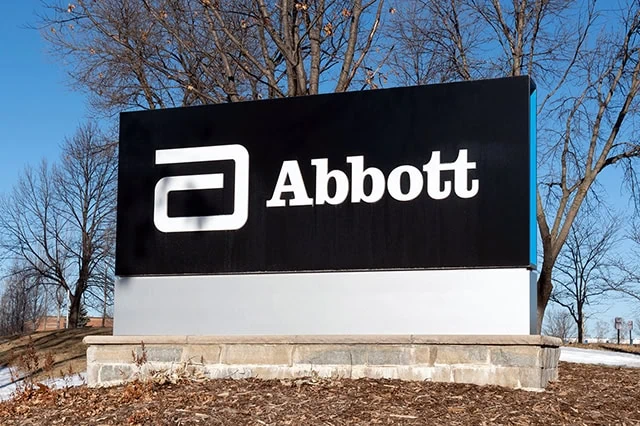
- Sector: Health care
- Market cap: $226.9 billion
- Dividend yield: 1.8%
- Consensus analyst rating: 1.82 (Buy)
Abbott Laboratories (ABT) is a large health care firm that develops, makes, and sells medical devices, diagnostic products, nutritional products, and generic pharmaceuticals. Among other things, it’s responsible for FreeStyle (and FreeStyle Libre) glucose monitors, Pedialyte hydration products, Similac formulas, PediaSure children’s nutritional products, and BinaxNow COVID-19 antigen tests.
Medical devices are Abbott’s biggest breadwinner at nearly half of revenues, and they’ve been a key driver of growth of late. The company has reported 10 consecutive quarters of double-digit top-line growth in medical devices, including a 25% pop in diabetes care and a 16% improvement in structural heart products.
Abbott is coming up against at least short-term headwinds related to its diagnostics business, with the company recently downgrading its full-year revenue estimates. Regardless, ABT enjoys a crowded bull camp of 20 Buys (versus seven Holds and one Sell).
“With second-half revenue estimates coming down on a stock that going into this call was up 16% year-to-date and traded at 23 times 2026 EPS, it does make the ultra-near-term setup a bit more challenging,” say William Blair analysts. “We rate shares Outperform [equivalent of Buy] on the belief that an acceleration in organic revenue growth and durable double-digit earnings growth should warrant upside to current share levels over the next 12 months.”
“We believe Abbott’s growth drivers (including the FreeStyle Libre, electrophysiology products, leadless pacemakers, and cardiovascular devices) as well as its ability to develop and launch new products could lead to continued growth in sales and earnings,” adds Argus Research analyst David Toung (Buy). “We note that Abbott plans to expand the FreeStyle portfolio beyond the diabetic market to the consumer market.”
Abbott isn’t just a Dividend Aristocrat—it’s a Dividend King, which means it has upgraded its payout for at least 50 consecutive years (53, to be specific). And the dividend itself dates back a full century, to 1924.
Related: 15 Best Investing Research & Stock Analysis Websites
Best Dividend Aristocrat #8: Emerson Electric
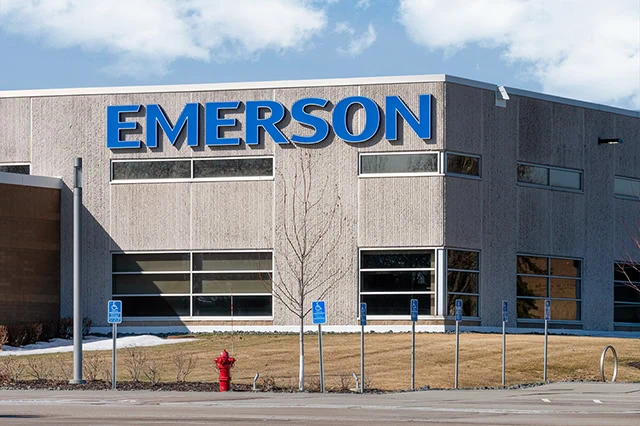
- Sector: Industrials
- Market cap: $73.6 billion
- Dividend yield: 1.6%
- Consensus analyst rating: 1.77 (Buy)
Emerson Electric (EMR) is an industrial-sector firm that was founded in 1890 and headquartered in St. Louis. Emerson has established itself as a global leader in technology and engineering, providing innovative solutions in process control, industrial automation, heating, ventilation, and air conditioning (HVAC), and more.
The company’s emphasis on technological advancement and diversified market penetration has been crucial in maintaining a competitive edge over the last 125-plus years. What once was a maker of electric motors and fans is now a global industrial-technology giant that produces not just tens of thousands of products, but even industry, automation, and operations management software.
It’s also a popular company among Wall Street’s analyst set, enjoying 19 Buy calls versus just five Holds and two Sells.
“While tariff uncertainty is putting a lid on capital spending in the near term, we see strengthening traction for automation demand as U.S. reshoring matures and manufacturers seek to hedge against labor cost inflation and labor shortages,” says CFRA analyst Jonathan Sakraida (Buy). “We anticipate additional earnings with accretive M&A activity looking to 2026 as EMR makes progress on deleveraging its balance sheet over the next 12 months. EMR’s margin quality will likely continue to improve as the company’s portfolio pivots further toward software offerings, providing upside to earnings growth.”
While its most recent payout increases haven’t been much to crow about, Emerson Electric has delivered decades of consistent dividend growth. This industrial firm’s dividend track record spans 68 consecutive years, including a 1% uptick to its payout, to 52.75¢ per share quarterly, announced in November 2024.
Related: 9 Best Fidelity ETFs for 2025 [Invest Tactically]
Best Dividend Aristocrat #7: Linde

- Sector: Materials
- Market cap: $217.8 billion
- Dividend yield: 1.3%
- Consensus analyst rating: 1.72 (Buy)
Materials companies are often extremely cyclical investments that tend to rise and fall based on broad-based economic trends and industrial demand. That said, a few have passed the test of time and managed to deliver consistent dividends regardless.
Case in point: Ireland-based Linde plc (LIN). Linde is the world’s largest industrial gas producer, offering oxygen, nitrogen, argon, helium, hydrogen, electronic gases, acetylene, and rare gases. It also produces air separation, synthesis, olefin, and other plants for third-party customers. And it does this across every continent.
While this is certainly a cyclical business, Linde offers some shelter from the economic shocks that many of its businessmates suffer. That’s in part because of its diverse offerings, but also because of the industries it supplies.
“The company has a strong presence in many defensive end markets, including health care, food and beverages, and electronics that should generate consistent revenues even in a soft economic environment,” says Argus Research analyst Alexandra Yates, who is one of 19 Buys on LIN shares (vs. five Holds and one Sell). “In addition, Linde currently manages a significant $10 billion backlog of projects, mostly under contract with blue-chip companies, which provide strong and steady cash flow and maintain a solid balance sheet. The long-term contracts allow for safe and consistent returns and position the company for future growth.”
In fact, its business has been so relatively stable that it has—by virtue of its 2018 merger with fellow gas giant Praxair—been able to deliver 32 consecutive years of increased dividends to its shareholders, most recently an 8% hike announced in February 2025, to $1.50 per share.
While long-term buy-and-holders might look away from the materials sector, Linde sticks out as both a Dividend Aristocrat and a surprisingly stable “forever stock.”
Related: 17 Best Investment Apps and Platforms [Free + Paid]
Best Dividend Aristocrat #6: Cardinal Health
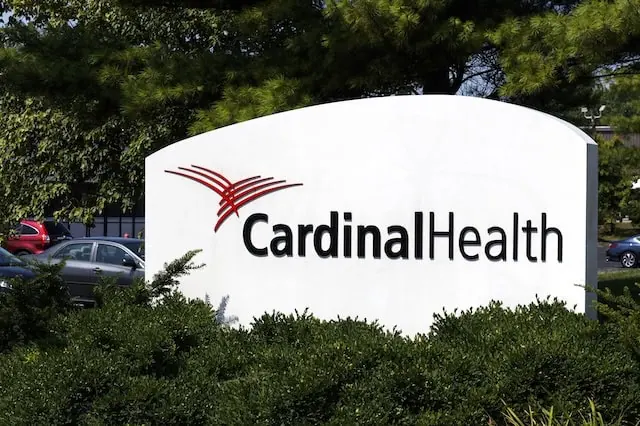
- Sector: Health care
- Market cap: $37.5 billion
- Dividend yield: 1.3%
- Consensus analyst rating: 1.69 (Buy)
Cardinal Health (CAH) is a relatively boring but extremely essential cog in the health care machine, providing both products and services to hospitals, health care systems, pharmacies, ambulatory surgery centers, physician offices, even home patients.
Just a small sample of its offerings include distributing branded, generic, and specialty pharmaceutical, medical supplies, over-the-counter health care products, and consumer products; pharmacy management services; Cardinal Health-manufactured and branded medical, surgical, and laboratory products; and supply chain services.
This wide reach provides both revenue diversification across the sector, as well as ample opportunity for growth in several segments.
“Our Buy rating on CAH is driven by the company’s organic growth profile within the core pharma distribution segment, which will likely outpace peers over the next year,” says BofA Global Research analyst Allen Lutz. “We believe new and existing customer growth, unique PBM tailwind, and specialty assets should support [earnings before interest and taxes, or EBIT] growth ahead of peers. Core pharma growth should provide baseline support in a healthy end-market, offsetting risks around recent customer losses and potential volatility/increased competition within the medical segment.”
Cardinal shares have zoomed ahead in 2025, up more than 30% as of this writing. The consensus is for more of the same; Lutz is one of 11 Buys on the stock, in contrast to five Holds and one Sell.
Cardinal Health also extended its dividend growth streak earlier this year, in May 2025, when it raised its payout by 1% to 51.07¢ per share. That puts the Dividend Aristocrat at 29 years of uninterrupted payout increases.
Related: 7 Best High-Dividend ETFs for Income-Minded Investors
Best Dividend Aristocrat #5: Coca-Cola

- Sector: Consumer staples
- Market cap: $285.6 billion
- Dividend yield: 3.1%
- Consensus analyst rating: 1.56 (Buy)
The Dividend Aristocrats are littered with consumer staples stocks: companies that make goods considered to be basic necessities.
It’s pretty easy to understand why. When times get tough, households might spend less on vacations and designer jeans, but they’re not going to stop going to the grocery store. (This is why staples make for some of the best dividend stocks for beginners, too.)
Take Atlanta-based beverage titan Coca-Cola (KO), which has more than 130 years of operating history and currently serves up more than 200 brands to more than 200 countries and territories.
Sugary soft drinks might not be a growth business in an age of healthier living, but Coca-Cola products still enjoy strong baseline demand. But more importantly: This mega-cap powerhouse is more than just Coke. Coca-Cola boasts a wide variety of other beverage brands, including Vitaminwater and Dasani water, Fuze teas, Powerade sports drinks, Minute Maid juices, Costa Coffee, Fairlife ultra-filtered milk, and many more drinks that are likely to meet your definition of a household staple.
But Coke isn’t just a consumer staples stock—it’s one of the best, boasting a huge bull contingent of 22 Buys versus three Holds and not a single Sell call right now.
“Coke remains our top pick, with strong and durable pricing power, existing historical volume growth, sustained market share gains, as well as increasing contribution from the high-growth Fairlife brand,” says Morgan Stanley analyst Dara Mohsenian. BNP Paribas Exane senior research analyst Kevin Grundy (Outperform) also cites the “under-appreciated Fairlife contribution” in his bull thesis, as well as a “best-in-class portfolio, market share, return of capital, free cash flow story … [and] attractive valuation.”
And then there’s Coca-Cola’s place among the Dividend Aristocrats (and Kings). KO currently boasts 63 years of unfettered dividend growth, most recently announcing a 5% hike to its payout (to 51¢ per share) in February 2025.
Related: The 8 Best Dividend ETFs [Get Income + Diversify]
Best Dividend Aristocrat #4: Nucor
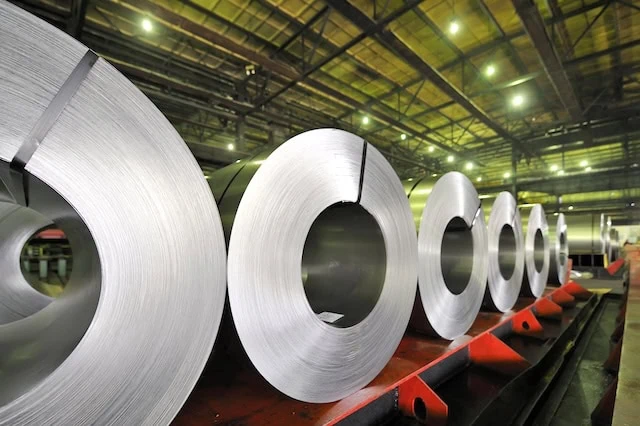
- Sector: Materials
- Market cap: $31.2 billion
- Dividend yield: 1.6%
- Consensus analyst rating: 1.50 (Buy)
Nucor (NUE) is North America’s largest steel manufacturer and recycler. It produces a wide variety of products, including hot-rolled, cold-rolled, and galvanized sheet steel products; bar steel products; and steel joists and joist girders, among other products. It also has a raw materials segment that produces direct reduced iron, processes scrap metal, and even engages in natural gas production.
It’s among the top-rated materials stocks right now, too, enjoying 12 Buys versus just two Holds.
“Nucor continues to execute on its multi-year growth pipeline that should over time support higher through-cycle profitability and [free cash flow] … in our view, risk/reward remains compelling,” says BMO Capital Markets metals and mining analyst Katja Jancic, who rates shares at Outperform. However, she adds that while “order activity and backlogs remain healthy … trade/macro uncertainties remain somewhat of a headwind.”
It’s a reminder that Nucor is another highly cyclical stock whose fates are closely tethered to economic activity, both here and abroad.
That’s not exactly fertile breeding ground for dividend stability, but Nucor has delivered enough of it—52 years—to qualify as a Dividend King. No. 52 came in December 2024, when the company raised its payout by 3.7%, to 55¢ per share.
Related: 7 Best T. Rowe Price Funds to Buy and Hold
Best Dividend Aristocrat #3: West Pharmaceutical

- Sector: Health care
- Market cap: $19.5 billion
- Dividend yield: 0.3%
- Consensus analyst rating: 1.43 (Strong Buy)
When is a pharmaceutical company not a pharmaceutical company? When it’s West Pharmaceutical (WST).
Apologies to those of you who hate riddles.
Anyways, West Pharmaceutical designs, manufactures, and sells not drugs, but the containment and delivery systems that house those drugs. Its products include syringe and cartridge components, stoppers and seals for injectable packaging systems, entire self-injection systems, and drug containment solutions (including a cyclic olefin polymer called Crystal Zenith). It also provides analytical lab services, regulatory expertise, and other integrated solutions.
In short: Whereas buying a pharmaceutical company is a play on the success of that pharmaceutical company’s treatments, buying West Pharmaceutical is effectively a play on the overall growth of the pharmaceutical industry … and, of course, West’s ability to convince other pharmaceutical companies that it’s the ideal packaging partner.
Wall Street is certainly convinced—the stock enjoys 12 Buys versus two Holds and no Sells.
“Our Buy rating on West Pharmaceutical Services reflects our view that positive mix shift to high-value products (HVP) driven by Annex 1 regulations [European rules governing the manufacturing of sterile medicinal products] and GLP-1 tailwinds will enable West to return to [long-term] growth of ~7%-9% upon the conclusion of destocking,” UBS analyst Dan Leonard says.
A business built on the broader growth of the health care sector has also meant growing income over time, which WST has been happy to increasingly share with investors. In late July 2025, the company announced its 33rd consecutive hike to the cash distribution—a 22¢-per-share payout set to begin in November.
Related: Direct Indexing: A (Tax-)Smarter Way to Index Your Investments
Best Dividend Aristocrat #2: Walmart

- Sector: Consumer staples
- Market cap: $807.9 billion
- Dividend yield: 0.9%
- Consensus analyst rating: 1.36 (Strong Buy)
Walmart (WMT) needs little introduction, but I’ll give it one anyways.
Walmart is a global retailing behemoth, operating nearly 11,000 stores and clubs in 19 countries, including 4,600 stores—not just Supercenters, but also discount stores, Neighborhood Markets and small-format stores—in the U.S. That doesn’t even include its 600 Sam’s Club warehouse-club locations.
WMT is frequently contrasted with fellow big-box store Target—the former is considered a lower-priced but lower-quality retailer, while the latter is pricier but perceived to be more upscale. Fortunately for Walmart, at least part of that equation is changing.
“‘I don’t like shopping at Walmart’; well, there are solutions for that too,” says Truist managing director Scot Ciccarelli, one of 40 Buys on the stock (versus one Hold and one Sell). “Many ‘suburban soccer moms’ would often prefer Target to Walmart, given Target’s real estate strategy and focus on solid value in discretionary goods like apparel and home goods. However, we think these historical biases are fading, given the improvements to Walmart’s store standards, widening price gaps and, maybe most importantly, convenience and e-commerce options that simply didn’t exist years ago.”
Among the things helping to drive both Walmart’s reputation and growth is its fresh-food offerings.
“The fresh category at WMT has experienced 70% growth over the past 9-10 years, noting it is up 50% since 2020,” says Goldman Sachs analyst Kate McShane (Buy). “Per management, fresh is important for the perception of the overall quality of the store, and in-stocks are restocked every day. … WMT is working to continue to elevate its assortment within the grocery category, noting that an elevated fresh selection can be rolled out in a store without a full remodel.”
Walmart is also a king among Dividend Aristocrats. Its 52nd consecutive dividend improvement came in March 2025, when it juiced its distribution by 13%, to 23.5¢ per share.
Related: 8 Best Stock Portfolio Tracking Apps [Stock Portfolio Trackers]
Best Dividend Aristocrat #1: S&P Global
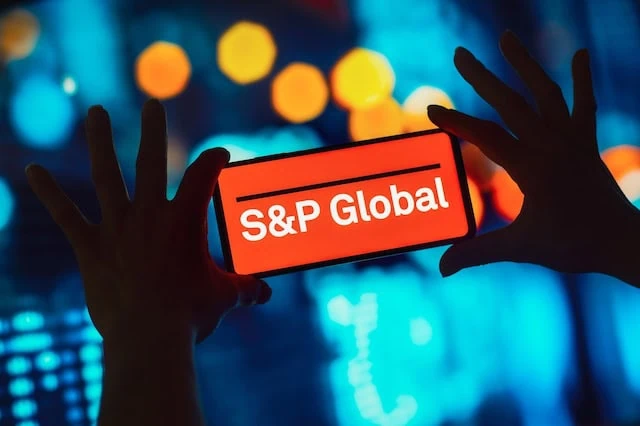
- Sector: Financials
- Market cap: $147.7 billion
- Dividend yield: 0.8%
- Consensus analyst rating: 1.32 (Strong Buy)
I get a little enjoyment out of informing you that S&P Global (SPGI)—parent of S&P Dow Jones Indices, which produces the S&P 500—is also the best-ranked Dividend Aristocrat within the S&P 500.
The S&P 500, of course, is America’s most ubiquitous index—literally trillions of dollars worth of fund assets are either indexed to it or benchmarked against it. (And as I point out every year in my list of the best ETFs, active managers have a really hard time beating it.)
But S&P Global is more than just the S&P 500. It’s also responsible for the Dow Jones Industrial Average, the Dow Jones Transportation Index (the oldest index in use), and more than a million other indexes across a number of asset classes. It’s also home to …
- S&P Global Ratings: Credit ratings, research, and analytics
- S&P Global Commodity Insights: Information and benchmark prices for commodities and energy
- S&P Global Market Intelligence: A wide variety of financial markets and asset data and analytics, enterprise technology, and advisory services.
- S&P Global Mobility: Solutions for vehicle manufacturers, automotive suppliers, mobility service providers, and other companies in the automotive value chain. (Note: The company announced this year that Mobility will be spun off, likely sometime in 2026.)
“We look favorably upon SPGI’s long-term prospects,” says Oppenheimer analyst Owen Lau (Outperform), one of 24 analysts with Buy-equivalent calls on SPGI, versus one Hold and no Sells. “Other than enjoying secular tailwinds, including rising corporate debt, ESG, the data explosion, and active-to-passive investing, SPGI also has strong fundamentals including oligopolistic positions in many areas, a scalable platform, and shareholder-friendly capital return policies to support its premium valuation.”
This varied and growing set of businesses has allowed S&P Global to pay dividends every year since 1937, as well as grow those dividends for 52 consecutive years. SPGI’s latest improvement was a 5.5% bump, to 96¢ per share, announced in January 2025.
Want to talk more about your financial goals or concerns? Our services include comprehensive financial planning, investment management, estate planning, taxes, and more! Schedule a call with Riley to discuss what you need, and what we can do for you.





![7 Best Vanguard Dividend Funds [Low-Cost Income] 32 Many hundred dollar bills against a light background.](https://youngandtheinvested.com/wp-content/uploads/cash-dividends-money-folded-bills-1200-600x403.webp)
![5 Best Tech Dividend Stocks [According to the Pros] 33 tech stocks growth market tickers jumbotron 1200](https://youngandtheinvested.com/wp-content/uploads/tech-stocks-growth-market-tickers-1200-600x403.webp)

